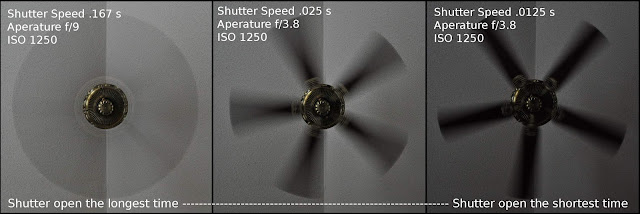What is Shutter Speeds
The changing for shutter speeds can produce your images more blurry or sharp object ( depending the movement of the object ), or even more lighter or darker.
Shutter speed is the measure of the duration or length of time that the shutter stays open. The longer the shutter stays open, the more light will be allowed to reach the image sensor.
Faster shutter speeds “freeze” the action and often require more light and a larger aperture (smaller f-stop number). Slower shutter speeds enable pictures to be taken in lower light with a smaller aperture (larger f-stop number).

Shutter Speed Sequence differences in the size of a stop is:
1/8* -> 1/15-> 1/30 -> 1/60 -> 1/125 -> 1/250 -> 1/500 -> 1/1000 (in seconds)
*1/8 we can read as 1 movement of shutter is reached in 0,125 second ( 1 second devided 8 )

Here are some basic tips about shutter speeds to begin:
Shutter speed to freeze motion; To stop a racing car, or someone riding a bicycle, start with 1/1000 second. Use the highest possible shutter speed to freeze motion.
The faster an object moves we want to freeze in the image, the faster shutter speed is needed.
To take sharp photos; Use a secure shutter speed. Rules safely in most conditions is setting shutter speed from 1/60 or faster, so that the resulting image will be sharp and safe from shaded photos results (blur / out of focus).
We can outsmart these safe limits with a tripod or use the Image Stabilization feature.
Another limit for secure shutter speed ; The shutter speed we have should be larger than the length of our lens. So if we are using a 50mm lens, use a minimum shutter speed of 1/60 sec. If we use the 17mm lens, use a shutter speed of 1/30 sec.
For everyday pictures such as portraits and views, use speeds of 1/60 second to 1/250 second. If the light is really bad, try not to go below 1/60 second. If you must, hold your camera very still and don’t expect to freeze any action.
Shutter speed can have a dramatic impact on the appearance of moving objects. Changes in background blurring are apparent from the need to adjust the aperture size to achieve proper exposure. Have a nice shoot ......